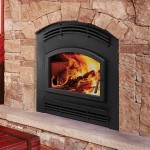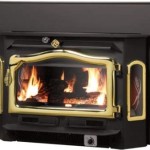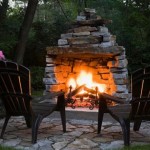Freestanding Baby Gate for Fireplace: A Comprehensive Guide
Fireplaces, while providing warmth and aesthetic appeal to a home, pose a significant safety hazard for infants and toddlers. The open flame, hot surfaces, and sharp edges can lead to serious burns and injuries. A freestanding baby gate specifically designed for fireplaces is an essential safety measure for households with young children. This article will delve into the considerations for selecting and using a freestanding baby gate for a fireplace, focusing on its features, safety standards, installation, and maintenance.
The primary purpose of a freestanding baby gate for a fireplace is to create a safe barrier that prevents children from accessing the hazardous area surrounding the fireplace. These gates are typically constructed from durable materials such as metal or wood and are designed to withstand the rigors of daily use. Unlike pressure-mounted or hardware-mounted gates, freestanding models do not require attachment to walls or door frames, making them a versatile option for various fireplace configurations.
Key Considerations When Selecting a Freestanding Fireplace Gate
Choosing the right freestanding baby gate for a fireplace requires careful consideration of several factors to ensure optimal safety and functionality. The size and shape of the fireplace, the gate's construction materials, and the overall design are all crucial aspects to evaluate.
Firstly, the dimensions of the fireplace opening and surrounding hearth area are paramount. Accurate measurements are necessary to select a gate that provides adequate coverage and prevents children from circumventing the barrier. Many freestanding gates are modular, allowing for customization of the gate's width and configuration. This modularity is especially beneficial for fireplaces with irregular shapes or large openings. The height of the gate is also important. It should be tall enough to prevent a child from climbing over it, typically at least 22 inches high.
Secondly, the construction materials used in the gate's design directly impact its durability and safety. Metal frames, particularly those made of steel or aluminum, offer superior strength and resistance to impact. Wood gates can be aesthetically pleasing but may not be as resistant to damage as metal alternatives. The spacing between the bars or mesh of the gate is also critical. The openings should be narrow enough to prevent a child from squeezing through or getting their limbs stuck. A general guideline is that the spacing should not exceed 2.375 inches.
Thirdly, the design of the gate should incorporate safety features that minimize the risk of injury. Rounded edges and smooth surfaces are preferable to sharp corners or protrusions. The locking mechanism should be childproof, preventing young children from opening the gate independently. Some freestanding gates feature a walk-through door, which provides convenient access for adults while maintaining the integrity of the barrier. The stability of the gate is also an important consideration. Look for models with wide bases or stabilizing feet to prevent tipping. Some models may also include optional wall-mounting hardware for added stability, especially for larger or heavier configurations.
Safety Standards and Certifications
Ensuring that the selected freestanding baby gate meets established safety standards is a vital step in protecting children from potential hazards. Several organizations, such as the American Society for Testing and Materials (ASTM) and the Juvenile Products Manufacturers Association (JPMA), develop and certify products that meet specific safety requirements.
The ASTM F1004 standard specifies the safety requirements for baby gates and enclosures. This standard covers various aspects, including the gate's structural integrity, the size of openings, the locking mechanism's effectiveness, and the stability of the gate. JPMA certification indicates that a product has been independently tested and verified to meet or exceed ASTM standards. Look for the ASTM F1004 or JPMA certification label on the product packaging or in the product description to ensure compliance with safety standards.
In addition to the general safety standards for baby gates, it is also prudent to consider any specific safety recommendations related to fireplace safety. Some manufacturers may provide additional guidelines for using their gates in conjunction with fireplaces, such as maintaining a minimum distance between the gate and the fireplace itself to prevent the gate from overheating. Consultation with a professional fireplace installer or safety expert may provide further guidance on ensuring the safe use of the gate in a particular fireplace setup.
Regular inspection of the gate for any signs of damage or wear is essential. Check for loose screws, cracked frames, or malfunctioning locking mechanisms. Any damaged components should be repaired or replaced immediately. Keep the area around the gate clear of any objects that a child could use to climb over or reach the fireplace.
Installation and Maintenance of Freestanding Fireplace Gates
Proper installation and regular maintenance are crucial for ensuring the continued effectiveness and safety of a freestanding baby gate for a fireplace. Following the manufacturer's instructions carefully during installation is essential. Neglecting installation steps or improvising can compromise the gate's stability and effectiveness.
The first step in installing a freestanding gate is to clear the area surrounding the fireplace. Remove any furniture, rugs, or other objects that could obstruct the gate or pose a safety hazard. Position the gate in the desired location, ensuring that it provides adequate coverage of the fireplace opening and hearth area. If the gate is modular, adjust the panels to achieve the desired width and configuration.
Once the gate is positioned correctly, secure it in place according to the manufacturer's instructions. Many freestanding gates feature adjustable feet or stabilizers that can be used to level the gate and prevent it from tipping. Tighten these feet or stabilizers until the gate is firmly planted on the floor. Some models may also include optional wall-mounting hardware for added stability. If using wall-mounting hardware, be sure to follow the manufacturer's instructions carefully and use appropriate anchors for the wall type.
Regular maintenance of the freestanding gate is essential for ensuring its continued safety and functionality. Inspect the gate regularly for any signs of damage or wear. Check for loose screws, cracked frames, or malfunctioning locking mechanisms. Any damaged components should be repaired or replaced immediately. Clean the gate regularly with a mild detergent and water to remove any dirt or grime. Avoid using harsh chemicals or abrasive cleaners, as these can damage the gate's finish or materials.
It is also important to periodically test the locking mechanism to ensure that it is functioning properly. Make sure that the latch engages securely and that the gate cannot be easily opened by a child. If the locking mechanism is not functioning correctly, lubricate it with a silicone-based lubricant or replace the latch assembly. Keep a record of the gate's maintenance and repair history, including the dates of inspections, repairs, and replacements. This record will help to track the gate's performance over time and identify any potential issues before they become serious safety hazards.
Furthermore, educate all caregivers, including parents, grandparents, and babysitters, on the proper use of the freestanding fireplace gate. Ensure that they understand how to operate the locking mechanism and that they are aware of the importance of keeping the gate closed whenever the fireplace is in use or accessible to children. Remind them not to prop open the gate or leave it unattended, as this could create a safety hazard. By following these installation and maintenance guidelines, families can ensure that their freestanding fireplace gate provides a safe and secure barrier for young children.
Beyond the physical barrier provided by the gate, parental supervision remains paramount. A gate is a tool, not a replacement for responsible adult oversight. Even with a properly installed and maintained gate, vigilant monitoring of children around the fireplace is essential to prevent accidents and ensure their safety.

6 Panel Expandable Freestanding Safety Xmas Hearth Gate Jaxpety

Baby Gates For Fireplace Trubabe

29 Metal Woodstove Fireplace Safety Gate Guard Jaxpety

Wood Stove Gas Hearth Gate G3111g4301 G4311 Friendly Fires

Teeker Folding Fireplace Gate Baby Ubuy

Foldable Fireplace Fence Gate For Baby Pet Jaxpety

The Best Baby Gate Reviews By Wirecutter

Jaxpety Fireplace Baby Gate Dog For House Stairs Doorways Pet With Door Lock 5 Panel 118 Inch Black Com

Vingli 120 Baby Gate Fireplace Safety Fence Guard Adjustable 5 Panel Metal Play Yard For Toddler Pet Dog Tree 4 Wall Mounts Configurable Black Com

115 Inch Length 5 Panel Adjustable Wide Fireplace Fence Costway
Related Posts








